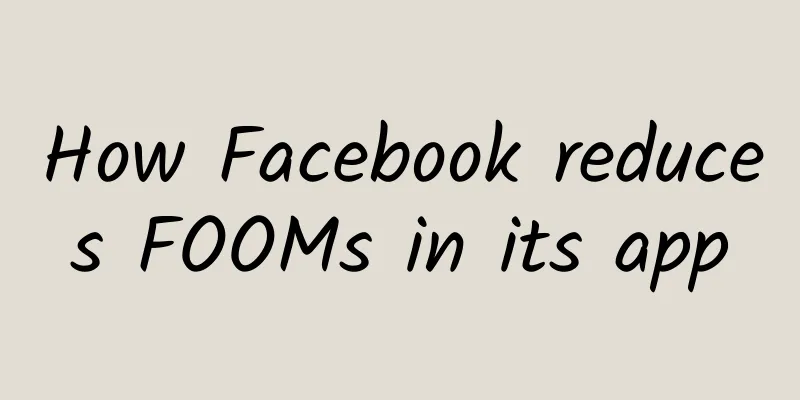Why did smartphone systems eventually become large and comprehensive?

|
This type of Android system customized by mobile phone manufacturers often has more practical functions than the original Android system, and is pre-installed with various applications, and is optimized for consumer needs in terms of interactive experience, etc. However, some users do not like this kind of comprehensive mobile phone system, but prefer models with a simple experience and quasi-native or native Android systems. So why do most users like "big and comprehensive" mobile phone systems, while some users like simple mobile phone systems? Let's talk about this topic today. Why are large and comprehensive mainstream mobile phone systems so popular?The development of the current mainstream mobile phone system to its current "big and comprehensive" state has actually gone through a very long process. In the early stages of the development of the domestic mobile phone market, it was mainly based on pre-installed native versions of the Android system. At this stage, the smartphone experience was still relatively primitive. After getting the phone, users still needed to connect it to a computer to download the app market and other applications.
Early Android system interface With the explosion of the smartphone market, mobile phone manufacturers soon began to make some limited modifications to the Android system based on user needs, including pre-installing app stores and app markets, designing some UI interfaces and desktop plug-ins and other elements. At the time, these changes could hardly be called customization of the mobile phone system. Early Android system interface At the same time, due to the emergence of user demand, many third-party developers began to develop various third-party ROMs. The now famous MIUI was developed from third-party ROMs. These third-party ROMs made in-depth modifications to the Android system, including comprehensive redesign of the UI, streamlining of system functions, integration of practical functions, etc. From then on, pre-installing a large number of functional applications in the mobile phone system became a mainstream practice. Early MIUI system interface As the competition in the smartphone market enters the second half, domestic mobile phone manufacturers have basically abandoned the practice of pre-installing native Android systems on smartphones, and have replaced them with customized Android systems developed by themselves. However, at this time, the customized systems are more focused on deep optimization and innovation at the UI and interaction levels. MIUI Icon Design After the flat UI design style swept the entire mobile phone industry, the mobile phone UI design basically established the current popular UI style. After that, mobile phone manufacturers began to focus on adding various new functions to the mobile phone system. After several years of development, mainstream Android mobile phone systems can basically meet most of the needs in life without installing third-party applications. For example, users can use the system camera built into the phone to achieve various beauty selfie effects without the need for beauty camera apps, and can watch video resources from the entire network in the system's pre-installed video apps without downloading online video apps. Many mobile phone systems even have built-in express assistant functions to help users track their express parcels in real time. Obviously, these mobile phone systems have achieved many functions beyond the system itself. Negative one screen design There are two main reasons for this phenomenon. On the one hand, users demand for smartphones to be ready to use, and on the other hand, smartphone manufacturers use smartphones as a super portal in the mobile Internet era and use their unique “portal” advantages to gain more profits. These two reasons have jointly promoted the development of smartphone systems in the direction of “big and comprehensive” from both the demand and supply sides. What is the charm of a simple or minimalist native system?While "big and comprehensive" has become the mainstream of smartphone systems, there are still a large number of users who prefer native-like experience. These users stick to the native Android system for the following two reasons. Sony Mobile Phone First of all, although many designs of the native Android system are not accepted by mainstream domestic users, there are still many people who like the UI design and interaction mode of the native Android system. The most iconic one is the application drawer design. Most of the current mainstream Android mobile phone systems have cancelled this design or have hidden it deeply. However, for heavy mobile phone users, this design that can quickly browse all mobile phone applications is still very practical. It is worth mentioning that in the latest iOS 14, iOS has added a design such as the application library. Secondly, users who have a strong desire to control the mobile phone system generally prefer a native Android system experience. These users like to configure the mobile phone system and install applications by themselves, hoping to achieve the required functions in a way that they approve of. Therefore, these users are more disgusted with deeply customized systems. Final ThoughtsFrom the current industry development situation, the system development direction of both iOS and Android phones is still "big and comprehensive", and mainstream mobile phone users have been pursuing a simpler and more convenient smartphone experience. However, in the future, there will still be mobile phone manufacturers who will continue to launch models pre-installed with native-like mobile phone systems in the domestic market. On the one hand, this is because the manufacturers themselves lack the research and development capabilities of mobile phone systems, and on the other hand, it is because users who love native-like mobile phone systems often have strong purchasing power and will pay for them. |
<<: 10 CSS generation tools for cool UI design effects
>>: Apple releases new iOS 14.6 beta: performance improvements and bug fixes
Recommend
What pitfalls should products and operations avoid?
We can’t copy other people’s successful experienc...
iOS 15 iCloud Private Relay vulnerability leaks user's real IP address
[[426360]] The iCloud private relay service vulne...
Here is a case analysis of a blind date information flow advertisement, so that you won’t be lonely on Valentine’s Day!
Friends often ask, what are the differences in th...
How to run a high-quality community?
Unknowingly, many years have passed since I gradu...
Where will OPPO go if its differentiated advantage is no longer there?
Among domestic mobile phone manufacturers, OPPO i...
How do brands follow hot topics? 3 methods
In the short video operation tutorials or practic...
19-year-old boy suffers from Alzheimer's disease, test yourself now!
Recently, a paper by Capital Medical University P...
Traffic thinking is dead, interaction and content marketing are immortal
Recently, I have received messages from some mark...
This type of charging data cable can burn up an entire room in 3 minutes, so it must be replaced!
Mobile phones are an indispensable necessity for ...
How to choose between React Native and Flutter?
In the field of mobile application development, R...
Instead of opposing beautification, software manufacturers should focus on mosaic removal
Everyone has a love for beauty. During the Spring...
Why does the Ring Nebula look like a donut?
On August 3, 2023, NASA released the latest photo...
Earn 300+ yuan a day from Douyin radio live broadcast, the gameplay is novel and the monetization effect is good, and anyone who knows how to use a mobile phone can operate it
Douyin radio live broadcast earns 300+ a day, the...
Detailed explanation of the three major issues of user activity, retention, and loss
Before solving a problem, do you want to understa...
Share the Douyin Book List Project, a way to play without being on camera
The day before yesterday, I shared an article: &q...









